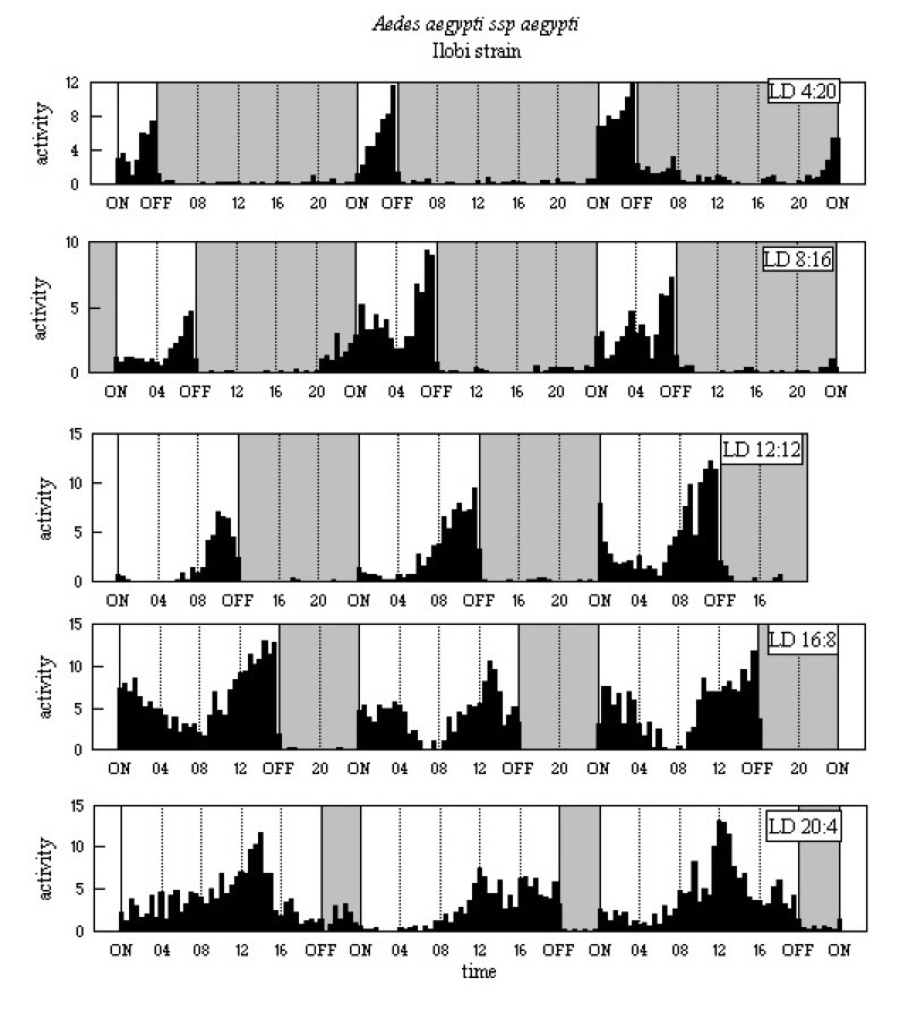

Biological Clocks in Mosquitoes
|
Experimental regimes
LD 8:16 to LD 4:20, six females, studied from 3-4 days
post-emergence (22-23 November 1968). Recorded in LD 8:16 for days six
to eight then light-on delayed 4h to give LD 4:20 for days nine to
eleven.
LD 12:12 to LD 16:8, six females, studied from 3-4 days
post-emergence (22-23 November 1968). Recorded in LD 12:12 for days six
to eight then light-on advanced 4h to give LD 16:8 for days nine to
eleven.
LD 20:4, six females, studied from 3-4 days post-emergence
(22-23 November 1968). Recorded for days eight to twelve.
Results
The activity patterns are shown in Figure A2 below.
The pattern in all five LD regimes is dominated by the E' peak.
Very little activity follows in the subjective night and there is a
variable M peak. This is most pronounced in LD 16:8 (the first
cycle shown is when the advancing of light-on from LD 12:12 took place,
so the large M may be due to the transient effect of phase
resetting). It is clear that when L > 16h the E' peak falls
progressively earlier as L increases, coming some 13-14h after light-on.
Figure A2

|
©1998, 2010 - Brian Taylor CBiol FSB FRES 11, Grazingfield, Wilford, Nottingham, NG11 7FN, U.K. Comments to dr.b.taylor@ntlworld.com |